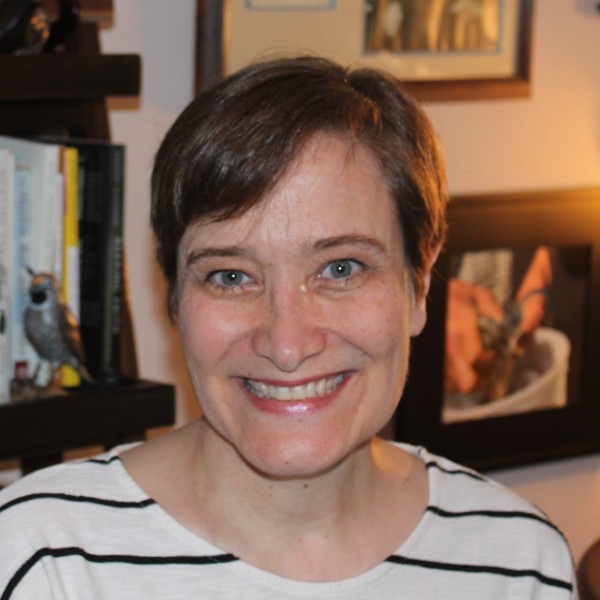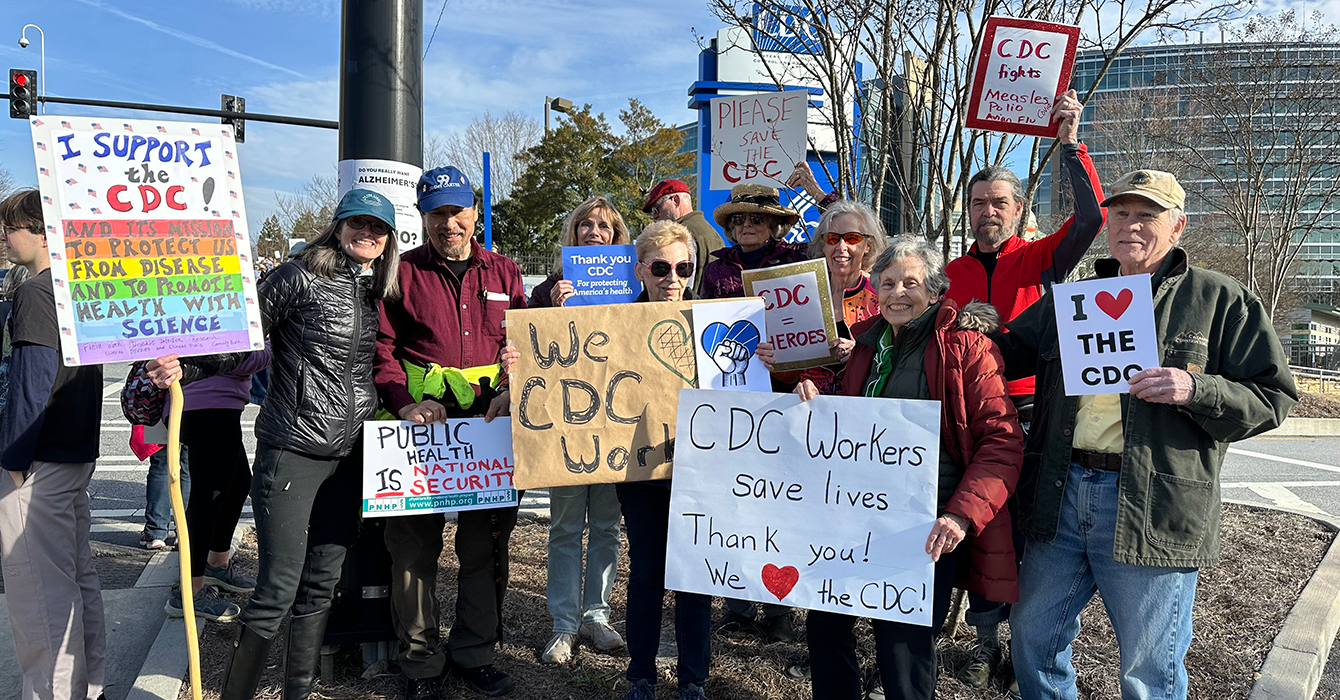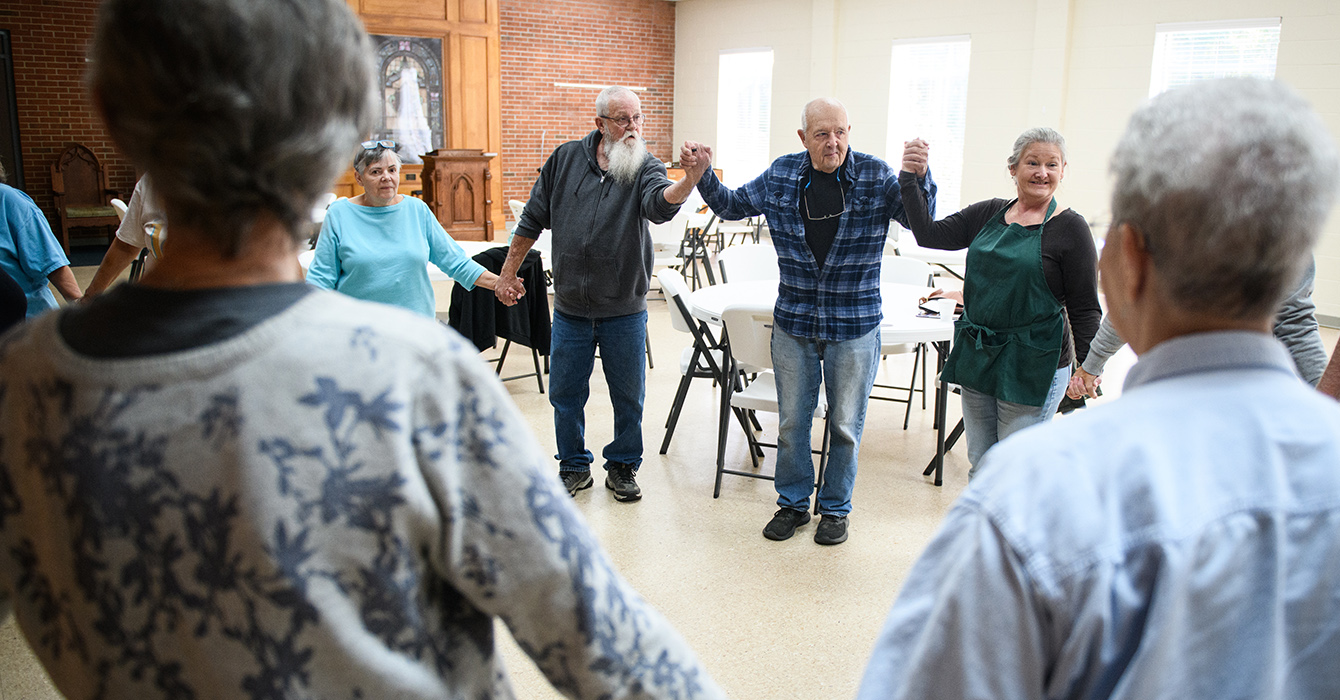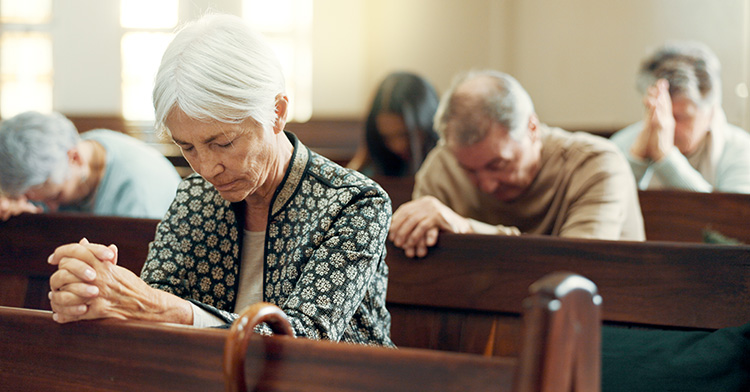Laity
Laity
Recently published
Tags
TagsHow do you care for federal workers losing their livelihoods and vocations?
Soup, a reserve fund and protests — these are some ways that a church in Atlanta is responding to families reliant on jobs at the Centers for Disease Control and Prevention.
 Link to author David Lewicki
Link to author David Lewicki
A food ministry in a tiny, rural town has helped hold a United Methodist church together across denominational divides
Volunteers from a small North Carolina church feed their neighbors each week with a hot meal and companionship in an outsize effort to the community.
 Link to author Yonat Shimron
Link to author Yonat Shimron
A note to pastors from a visitor in your pews
Writing from her perspective as a former pastor and now frequent church visitor, an associate director for Leadership Education at Duke Divinity’s Thriving Congregations Coordination Program suggests simple, concrete ways to welcome the visiting stranger.
A church offers training in faith and finance
Kingdom Fellowship AME Church helps its members thrive through financial literacy classes that help build economic stability and faithful generosity.
 Link to author Leslie Quander Wooldridge
Link to author Leslie Quander Wooldridge
Churches became one-stop shops at the height of COVID-19, but that is not sustainable
The pandemic pushed clergy into multiple new roles, and they responded. Now some of that work should be redirected to people better trained to do it, writes a director of grants for Leadership Education at Duke Divinity.
 Link to author Victoria Atkinson White
Link to author Victoria Atkinson White
Dignity and respect are the key to a multimillion-dollar ministry supported by a successful thrift shop
Dorcas Ministries attracts hundreds of volunteers who work at its secondhand store — and believe in its larger mission as one of the region’s premier social welfare agencies.
 Link to author Yonat Shimron
Link to author Yonat Shimron
Celeste Kennel-Shank: ‘It was the safest place I knew as a child.’
A pastor and journalist tells the story of the Community of Christ in Washington, D.C., in which she grew up. It was a five-decade-long experiment in living and worshipping in a neighborhood parish that intentionally ended in 2016.
Bearing fruit beyond having children
Some churches may prioritize families with young children, but they should also remember to value all members, an Episcopal priest writes.
 Link to author Elizabeth Felicetti
Link to author Elizabeth Felicetti
‘Napkin Theology: Small Drawings About Big Ideas’
In this excerpt from their new book, two North Carolina writers describe how God’s love is manifest in creation.
Incubator for discipleship
Rather than investing in a single, institutionally driven project, an Austin church is inviting parishioners to come up with innovative ways to serve their city — and providing initial funding.
 Link to author Edie Gross
Link to author Edie Gross











